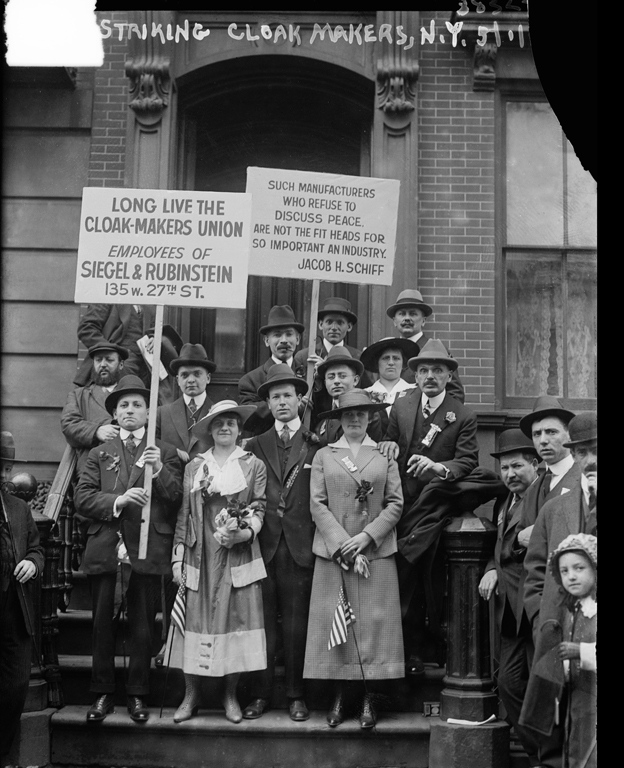The Skyscraper Museum is devoted to the study of high-rise building, past, present, and future. The Museum explores tall buildings as objects of design, products of technology, sites of construction, investments in real estate, and places of work and residence. This site will look better in a browser that supports web standards, but it is accessible to any browser or Internet device.
creating a union

Strike of Cloak Makers, New York, 1916. Library of Congress.
The Triangle Fire was an especially poignant tragedy because this prominent shirtwaist company had refused to recognize its workers' union rights following a lengthy strike in 1909. Workers in the two major components of the ladies' garment industry-cloaks and suits, and dresses and waists (i.e., shirtwaists, a type of tailored blouse)-had been attempting to organize since the 1880s. As early as 1882, striking workers demanded a $15 a week wage and a 10-hour day. For decades, workers organized marches and walked picket lines, only to be beaten or arrested by the police. In June 1900, the first national convention of cloakmakers convened in New York and formally organized the International Ladies' Garment Workers Union (ILGWU), a union of men and women workers in the ladies garment industry.
Factory owners were slow to recognize the union and often refused to bargain with its representatives. In 1910, a huge strike of cloakmakers ended with the Protocol of Peace, by which representatives of the manufacturers and union agreed to negotiate salaries, hours, and working conditions. Labor-management strife continued, but the legitimacy of the union had been established. The union not only represented workers in labor negotiations, but also provided extensive benefits, including health care, educational programs, and recreation opportunities such as summer stays at Unity House, a family summer camp for members in rural New York State.
